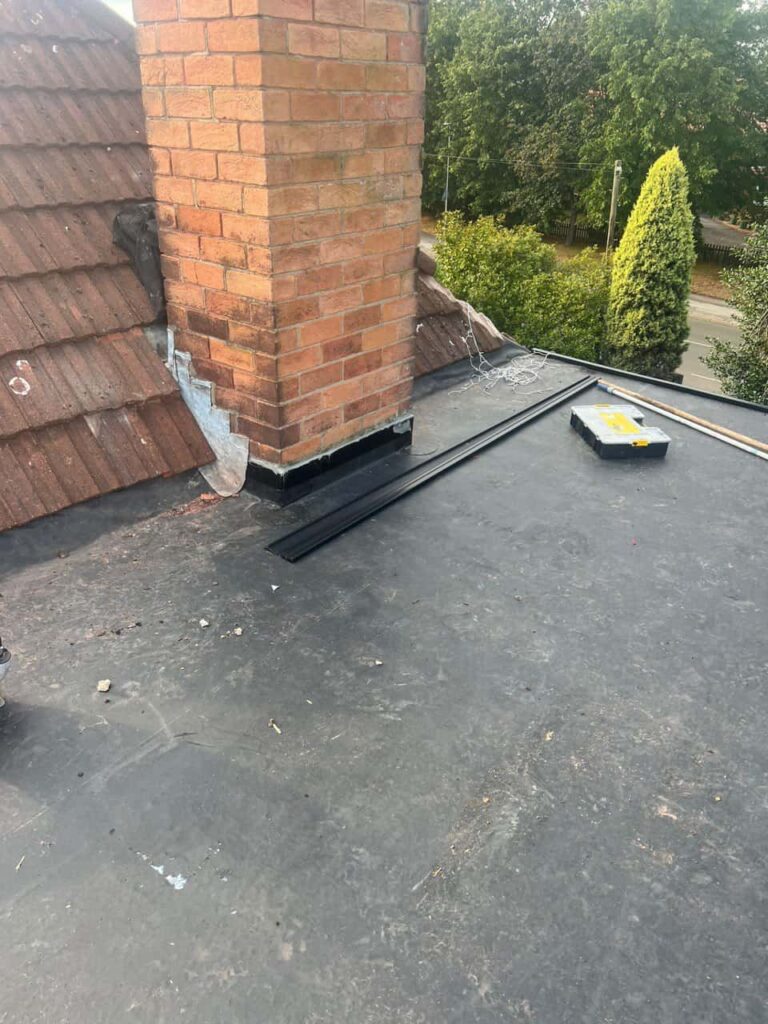Introduction: Roof sealants play a crucial role in maintaining the integrity of your roof and preventing leaks. At Brandon Roofing Repairs, we understand the importance of using high-quality sealants to protect your home from water damage. In this blog post, we’ll explore the role of roof sealants in leak prevention, the different types available, and how they can extend the lifespan of your roof.
Understanding Roof Sealants
Roof sealants are protective coatings applied to the roof surface to create a waterproof barrier. They are essential for sealing joints, seams, and any potential water entry points. Sealants can be used on various roofing materials, including asphalt shingles, metal roofs, and flat roofs, providing an extra layer of protection against the elements.
Benefits of Using Roof Sealants
- Waterproofing
- Benefit: Roof sealants effectively waterproof the roof surface, preventing water from seeping into the underlying structure.
- Result: This reduces the risk of leaks, water damage, and the growth of mould and mildew inside your home.
- UV Protection
- Benefit: Many roof sealants offer protection against harmful UV rays, which can degrade roofing materials over time.
- Result: By reflecting UV rays, sealants help maintain the roof’s structural integrity and appearance, extending its lifespan.
- Temperature Regulation
- Benefit: Some sealants have reflective properties that help regulate the roof’s temperature.
- Result: This can improve energy efficiency by reducing the heat absorbed by the roof, leading to lower summer cooling costs.
- Enhanced Durability
- Benefit: Sealants add a protective layer to withstand harsh weather conditions, including heavy rain, snow, and wind.
- Result: This enhances the overall durability of the roof, reducing the need for frequent repairs.
Types of Roof Sealants
- Acrylic Sealants
- Description: Acrylic sealants are water-based and known for their versatility and ease of application. They are suitable for various roofing materials and offer excellent UV protection.
- Best For: Asphalt shingles, metal roofs, and single-ply membranes.
- Silicone Sealants
- Description: Silicone sealants are highly flexible and durable, making them ideal for roofs that experience extreme temperature fluctuations. They provide excellent waterproofing and UV resistance.
- Best For: Flat roofs, metal roofs, and areas with high humidity.
- Polyurethane Sealants
- Description: Polyurethane sealants are solvent-based and offer strong adhesion and durability. They are resistant to wear and tear, making them suitable for high-traffic areas.
- Best For: Flat roofs, concrete roofs, and areas with heavy foot traffic.
- Bitumen-Based Sealants
- Description: Bitumen-based sealants are made from asphalt and provide excellent waterproofing. They are commonly used for repairs and maintenance on asphalt roofs.
- Best For: Asphalt shingles, built-up roofs, and modified bitumen membranes.
Applying Roof Sealants
- Preparation
- Step 1: Thoroughly clean the roof surface to remove dirt, debris, and loose material. Ensure the surface is dry before applying the sealant.
- Tip: Use a pressure washer or a stiff brush to clean the roof effectively.
- Inspection
- Step: Inspect the roof for any existing damage, such as cracks, holes, or loose shingles. Repair these issues before applying the sealant.
- Tip: Use roofing cement or patches to fix minor damage.
- Application
- Step: Depending on the type of sealant, apply the sealant using a brush, roller, or spray equipment. Follow the manufacturer’s instructions for the best results.
- Tip: Apply the sealant in a thin, even layer, ensuring complete roof surface coverage.
- Drying and Curing
- Step: The sealant can dry and cure according to the manufacturer’s guidelines. Depending on the sealant type and weather conditions, this may take several hours to a few days.
- Tip: Avoid walking on the roof during the curing process to prevent damage to the sealant.
Maintenance Tips for Roof Sealants
- Regular Inspections
- Regularly inspect your roof for signs of wear or damage to the sealant. Address any issues promptly to maintain the sealant’s effectiveness.
- Reapplication
- Depending on the type of sealant and the roof’s exposure to the elements, you may need to reapply the sealant periodically. Follow the manufacturer’s recommendations for reapplication intervals.
- Professional Maintenance
- Consider scheduling professional maintenance to ensure your roof and sealant are in optimal condition. Professional roofers can identify and address issues that may not be visible to the untrained eye.
Conclusion: Roof sealants are essential in preventing leaks and extending the lifespan of your roof. By choosing the right type of sealant and applying it correctly, you can protect your home from water damage and maintain a durable, weather-resistant roof. At Brandon Roofing Repairs, we offer expert advice and professional services to help you choose and apply the best sealants for your roofing needs.
Call us on: 01842 778 596
Click here to find out more about Brandon Roofing Repairs
Click here to complete our contact form and see how we can help you with your roofing needs.

